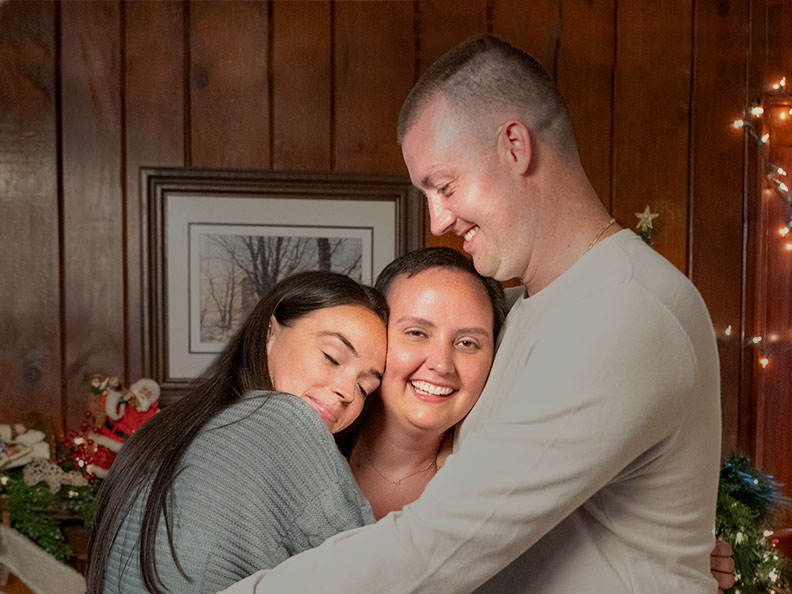Your gift is 100% tax deductible
FAQs: How the American Cancer Society Funds Research
No single nongovernmental, not-for-profit organization in the US has invested more to find the causes and cures of cancer than the American Cancer Society.
We fund the best science to find answers that help save lives.
Here are answers to some of the most frequently asked questions about how the American Cancer Society (ACS) pays for cancer research.
How do we get money? How much do we spend on research?
Some people may think that the ACS is an endowed organization, underwritten in perpetuity by a single wealthy benefactor, person, family, or corporation—not true! We’re also not funded by the US government. We’re primarily funded from personal donations—like yours. In 2022, you helped us invest more than $145 million in cancer research. Since 1946, we've invested more than $5 billion in research grants to the best scientists across the country. Your donations also support vital patient services and programs.
Does the American Cancer Society do its own research?
Yes. We have more than 50 full-time researchers on staff in Population Science and Surveillance, Prevention, & Health Services Research (SPHeRe). These experts:
- Conduct large-scale, nationwide cancer prevention studies. Since their start in 1952, the ACS Cancer Prevention Studies (Hammond-Horn, CPS I, CPS II, and CPS 3) have included more than 2.5 million study participants and contributed extensively to understanding the science about risks that increase the chances of developing cancer. Our CPS studies continue to influence international cancer guidelines for preventing cancer.
- Study behavioral, psychosocial, and lifestyle factors related to cancer survivorship and survival. With nearly 17 million cancer survivors alive today, our research is helping individuals live well after their cancer diagnosis.
- Produce the most widely cited reports on cancer statistics in the world, about cause, prevention, early detection, occurrence, treatment, and survival. Every year since 1951, we’ve published Cancer Facts and Figures, and since 1967, we’ve published a “Statistics Report,” in CA: A Cancer Journal for Clinicians, the flagship publication of the American Cancer Society.
- Analyze the influence of the world’s economic and health policies on major cancer risk factors, including tobacco use, poor nutrition, physical inactivity, and alcohol misuse. For example, ACS research has helped to create and refine models to effectively tax unhealthy products, such as tobacco, sugary drinks, and alcohol. That not only helped reduce consumption but also generated government tax revenue that can be allocated back to health care and other vital areas.
Do we offer grants to help other researchers?
Yes. Grants through our Extramural Discovery Science department support more than 1000 researchers at nearly 200 nonprofit institutions across the country for a wide range of cancer-related disciplines. We focus on providing funds to early-career investigators to foster the next generation of cancer research. We currently support more than 620 active grants with over $423 million in investments.
Do we fund research for all types of cancer?
Yes. Investigators can submit grant proposals for any type of cancer as well as for any type of research. They may focus on the causes of cancer; how best to prevent, detect, and treat cancer; as well as how to help improve the quality of life for people living with cancer.
Do we get more grant applications in certain areas?
Sometimes. Because we allow researchers to choose the topic for their grant proposals, the number of applications we get for each cancer type is largely reflective of the number of researchers who are working in that area. And, certain areas of cancer research draw more researchers than others. This may be because researchers perceive that one area has more resources or that working on an exciting new breakthrough could give them a greater chance to have a significant impact.
How do we know which research applications are the best?
Each grant application goes through an extensive scientific peer-review process. Our peer-review committees include third-party scientists, clinicians, and volunteer members called Community Research Partners. This research funding strategy has helped support numerous important discoveries and some of the brightest researchers, including more than 50 Nobel Prize winners to date.
How much funding do we need?
Approximately 1,000 research grant applications come in each year. Of these received applications, approximately 10 to 15% are approved for funding. Plus, our peer review committees always recommend that more applications be funded than we have the funds to cover.



